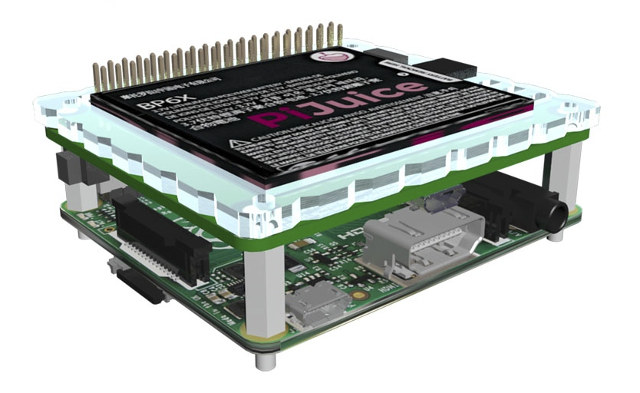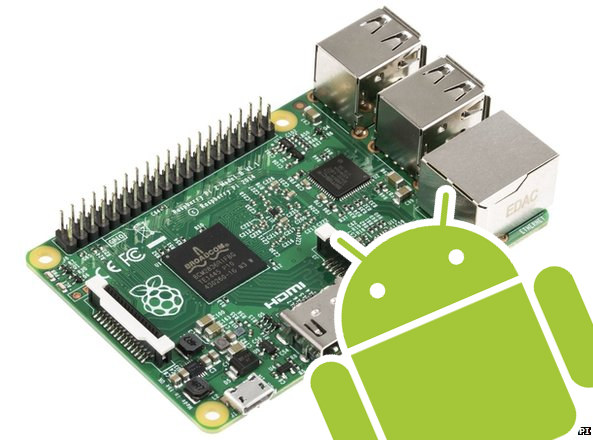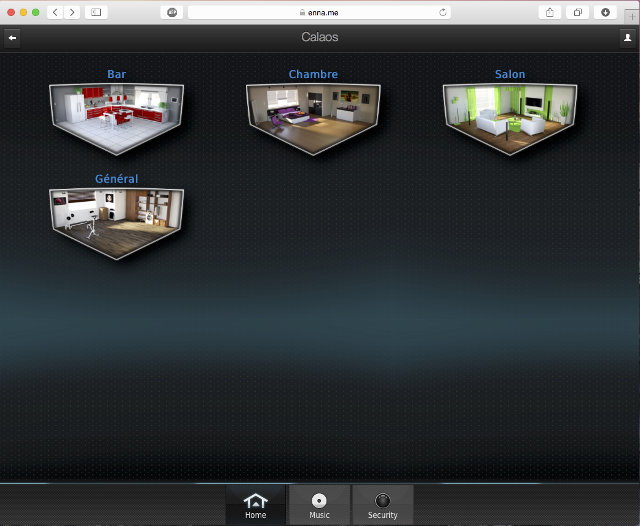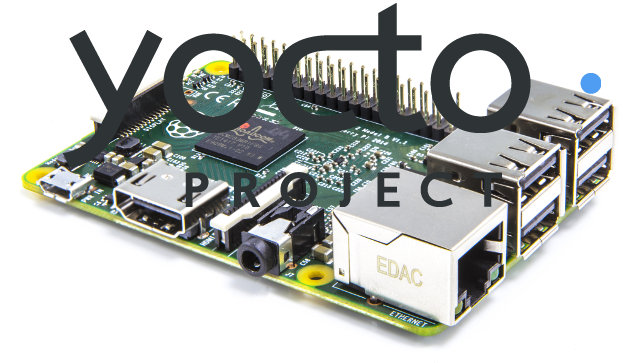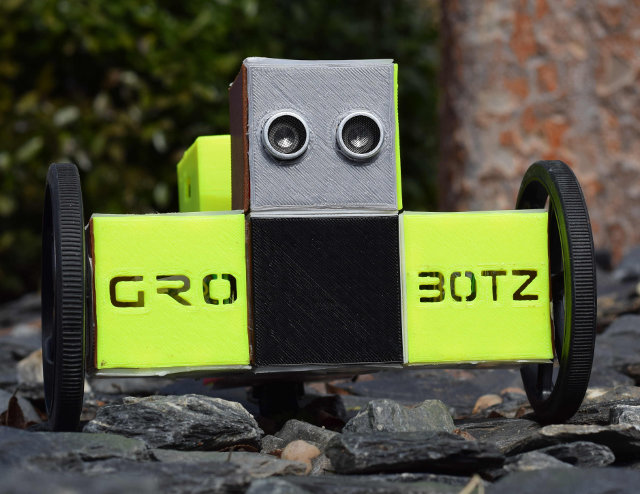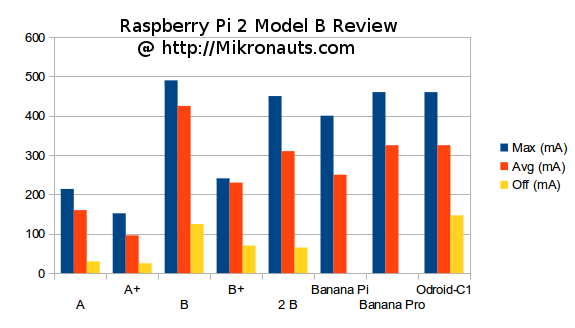The Raspberry Pi is a low power board that can be powered a few hours or a few days with batteries, and the easiest solution is probably to use a USB power bank connected to the micro USB port of the board, but the solution is not really integrated. That’s where PiJuice comes into play. It’s a HAT compatible module that connects nicely to the latest Raspberry Pi boards with 40-pin header (A+, B+ and B2), and include a 1,400 mAh battery that can be used as UPS (Uninterrupted Power Supply), an RTC, and more. Key features of PiJuice HAT: 1400 mAh Lipo battery, good enough to last up to 24 hrs in constant use. 5,000 mAh batteries are also said to be supported. Full UPS (Uninterrupted Power Supply) solution Integrated RTC (Real Time Clock) On board intelligent on/off switch Low power deep-sleep state with wake on interrupt/calendar event On […]
Experimental Android 5.x Lollipop Port for Raspberry Pi 2?
When Raspberry Pi 2 was announced, I was quite hopeful Android would be ported to the board since it now had the processing power and memory requirements to run Android. But members of the Raspberry Pi foundation put a damper on this expectation directly in their Android forums by closing some Android related threads, and stating the mobile operating system does not bring anything to the educational goal of the Raspberry Pi. But yesterday, I’ve been informed that there was an experimental Android 5.1 port for ODROID-C1 and another Android 5.x port for Raspberry Pi 2. One of the key challenges to port Android to Broadcom BCM2836 is allegedly the large number of changes required for VideoCore 4 GPU’s buffer management, which was done by Broadcom internally for BCM2835, but never ported to the Raspberry Pi. So it does not quite seem an easy task. The README on github describes […]
Calaos is an Open Source Home Automation Suite for Raspberry Pi, Allwinner A10/A20 and x86 Platforms
Calaos is a Linux based home automation software released under GPLv3 license that works on Raspberry Pi, some Allwinner platforms like Cubiebaord 1/2, Mele A1000(G)/A2000, as well as x86 / amd64 hardware platforms that allows you control switches & lights in the rooms of your home or office, control your music, and manage security cameras.. The developers have recently released Calaos v2.0, the first stable release, so it’s a good time to have a look. The software stack is comprised of 6 main components: Calaos Server – Daemon that exports the state of the house via a JSON protocol. It can currently manage the following hardware components and protocols: Wago’s PLC, with digital or analog I/O, DALI or DMX light bus IPX800 web relay board GCE Electronics Eco Devices used to monitor power consumption. Web API 1-Wire, X10 Zibase I/O GPIO (Linux based GPIO, for direct use of RaspberryPI GPIO […]
Raspbian Image with Docker 1.5.0 Released for Raspberry Pi Boards
I’ve read quite a few articles mentioning Docker recently, but never really looked into it. So what is Docker? The developers describe it as: Docker is an open platform for developers and sysadmins to build, ship, and run distributed applications. Consisting of Docker Engine, a portable, lightweight runtime and packaging tool, and Docker Hub, a cloud service for sharing applications and automating workflows, Docker enables apps to be quickly assembled from components and eliminates the friction between development, QA, and production environments. As a result, IT can ship faster and run the same app, unchanged, on laptops, data center VMs, and any cloud. In practice, it looks like a lightweight virtualization solution that facilitates apps distribution to different operating systems and hardware platforms. For example, if your development machine is running Ubuntu 14.04 and you’ve developed an app requiring Python 3.0, Docker should make it a breeze to it on […]
Build a Raspberry Pi 2 Minimal Image with The Yocto Project
The Yocto Project is a build system that allows developers to make custom Linux distributions matching their exact needs. I’ve already shown how to build a 12MB Compressed image for the Raspberry Pi with Yocto, but the Raspberry Pi 2 has recently been added to the project, so I’ve tried to build it too in a machine running Ubuntu 14.04. I’ll use poky since it’s the default, but you could also build the system for Angstrom or without distributions (OpenEmbedded Core only). The steps to get the code is just the same as for the Raspberry Pi:
|
1 2 3 4 5 |
mkdir yocto cd yocto git clone git://git.yoctoproject.org/poky.git cd poky git clone git://git.yoctoproject.org/meta-raspberrypi |
You just need to checkout master, and not any branch (like dizzy) since R-Pi 2 is not yet supported in any release. Initialize some environment variables and the build directory:
|
1 |
. oe-init-build-env build |
Now edit conf/local.conf with vim or nano to set the machine to raspberrypi2 instead of qemux86:
|
1 2 |
MACHINE ??= "raspberrypi2" GPU_MEM = "16" |
There are more Raspberry […]
GroBotz Interactive Robot Project is Made of Easy to Assemble Smart Blocks (Crowdfunding)
GroBotz makes me think of Lego applied to robotics. The project consists of modules such as motors, sensors, buttons, switches, or cameras that snap together in order to create a robot on wheels, games, toys, a musical instrument, or whatever idea you may have, and the hardware is then programmed using a graphical user interface. A Raspberry Pi board is used for the brain of the robot, and Microchip PIC MCUs for the smart blocks. The software is programmed in C# using Xamarin, the user interface is based on Unity, OpenCV is used for image processing, and during development a plastic part where printed with Makerbot, and schematics and PCB layout designed with CadSoft EAGLE. The company has now come up with a number of modules as shown in the picture below. Your robot can then be controlled over Wi-Fi with GroBotz app which works on Windows, Mac OS, iOs, […]
Raspberry Pi, Banana Pi, and ODROID-C1 Boards Power Consumption
Mikronauts has recently reviewed MIPS Creator CI20, ODROID-C1, and Raspberry Pi 2 Model B. R-PI 2 review is especially interesting since this is the last one, and the reviewer goes to compare all Raspberry Pi models (A, A+, B, B+ and 2 B) with Banana Pi, Banana Pro, MIPS Creator CI20, and ODROID-C1 development boards. The benchmark results are good to know, and expected with ODROID-C1 the fastest of the bunch both in terms of CPU and storage performance, but here I’ll just share the results of his power consumptions testing. Since all platforms are powered by a 5V power supply, I’ve converted the results into watts. Model Max (W) Avg (W) Off (W) A 1.07 0.80 0.15 A+ 0.76 0.48 0.125 B 2.45** 2.12 0.62 B+ 1.20 1.15 0.35 2 B 2.25 1.55 0.325 Banana Pi 2 1.25 0 Banana Pro 2.3 1.62 0 Odroid-C1 2.3 1.62 0.735* * […]
Linux 3.19 Release – Main Changes, ARM and MIPS Architectures
Linus Torvalds released Linux Kernel 3.19 yesterday: So nothing all that exciting happened, and while I was tempted a couple of times to do an rc8, there really wasn’t any reason for it. Just as an example, Sasha Levin used KASan and found an interesting bug in paravirtualized spinlocks, but realistically it’s been around forever, and it’s not even clear that it can really ever trigger in practice. We’ll get it fixed, and mark it for stable, and tempting as it was, it wasn’t really a reason to delay 3.19. And the actual fixes that went in (see appended shortlog) were all fairly small, with the exception of some medium-sized infiniband changes that were all reverting code that just wasn’t ready. So it’s out there – go and get it. And as a result, the merge window for 3.20 is obviously also now open. Linus Linux 3.18 improved performance of […]


